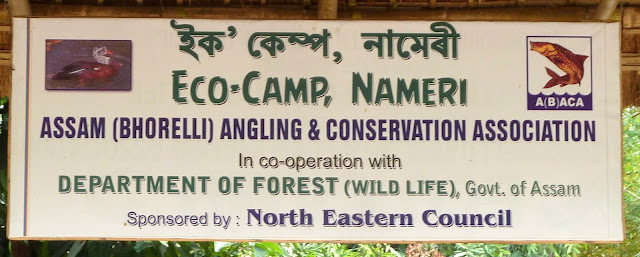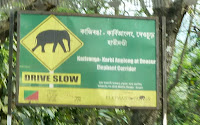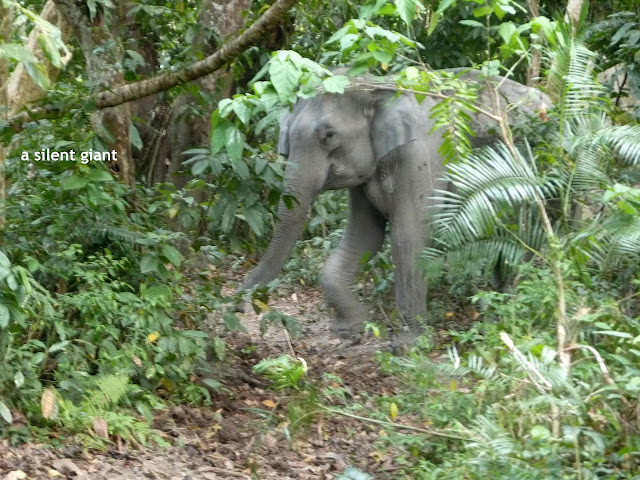I was always keen on visiting Kaziranga to see the rhinos. Here was an opportunity with the Bombay Natural History Society. I have been twice with them – Tadoba and Ranthambore / Chambal / Bharatpur. Their tours are well arranged, decent food and good accommodation. Not 5 star but that’s understood. It’s a jungle holiday, not a fancy walk amongst the trees. It’s a strenuous trip with walks of up to 5 – 6 kms daily especially if you are a birder as every day it means 5 am wake ups for early departures, but if you are like me, then you skip the early visits as I am not a birder and enjoy the trip with the other safaris / walks and enjoy your surroundings and relax. This trip was led by Vandan Jhaveri of BNHS.
First experience of mine with him. He plays the programme close to his chest in that, and I agree, he briefs the group together and not one by one. However, certain elements of the trip should be advised right up front at time of the initial announcement so one knows the totality of the experience. Still it was a great trip and exceeded my expectations in seeing the animals up close. So if you like nature, go with the BNHS. Removes all the hassle and tension of planning.
13 March 2018 - Met the group outside Mayur hotel at 7.00 am. My friend Commodore A B L Gupta was coming - we had travelled earlier together in the Amazon and Florida. Ismail Vahed, a South African birder, was coming too – we had met at Ranthambore. Here, one day earlier, whilst I am outside Sualkachi the weaving town, I get a call from him that he is joining the group. Incredible as it seems, we are literally half a kilometre from each other whilst we talk! We meet up and agree to meet the next day. Ismail and I rag each other a lot which I think some of the group may not understand but we have great fun. Ismail is a committed birder – carries the usual paraphernalia with him including his birding volumes. I learnt a lot by seeing his books.
We took the coach to Nameri but did a detour first to a place - Paschim Boragaon, outside Guwahati city limits where Vandan gave a surprise - a visit to a massive garbage dump the size of the whole area of Oval Maidan in Mumbai. Here sitting majestically on the garbage we saw the Famous Greater Adjutant Storks - there are a total of 1,000 of which 50% are in Guwahati. During the day, they soar in thermals along with vultures with whom they share the habit of scavenging. They feed mainly on carrion and offal but will sometimes prey on vertebrates. The English name is derived from their stiff "military" gait when walking on the ground. The bird is often found in the company of kites and vultures and will sometimes sit hunched still for long durations. They may also hold their wings outstretched, presumably to control their temperature. Valued as scavengers, they were once used in the logo of the Calcutta Municipal Corporation.

 At Nameri, we stayed at this eco-lodge – run by a local association whose aim is to create employment and training for local youth and to replenish the mahseer stocks from their hatchery. All the rooms are in fact tents with bathrooms at the rear. The kids running it are many and enthusiastic.
At Nameri, we stayed at this eco-lodge – run by a local association whose aim is to create employment and training for local youth and to replenish the mahseer stocks from their hatchery. All the rooms are in fact tents with bathrooms at the rear. The kids running it are many and enthusiastic. As we were leaving for the river, up in the tree, the group saw two great hornbills. One of the them, the male, had a baby spotted owlet in its beak. It was shaking it vigorously to get rid of the feathers. It then passed the owlet to the female who tried the same trick but dropped the bird instead. Initially I did not see them but slowly my eye got trained to the spot and I aimed my camera. That did the trick! We went and saw the dead owlet which had dropped by the entrance on the far side. Vandan then showed us the various items like the signature spider, some butterflies etc. The area is a flood plain eco system and we went to see it after lunch at around 4.30 to the river by coach and saw the birdlife.

 Here you see the boats being packed up to take back to the camp as we sit and watch the birds on the river 14 March - The group had a 6 am start for birding. I stayed behind and after breakfast, went and saw the hatchery for Mahseer. Rather dirty. Group back at noon. Left for the river 2.00 pm as we had to be back by sunset which is early – say 5.30 pm. We had two forest guards with us. Mina Ram 12 years in service but not confirmed in job hence lower salary of around ₹8,000 and Naseeruddin who had five years service but getting around ₹20,000 pm as confirmed employee. They both had loaded Lee Enfield rifles. Dated 1942.
Here you see the boats being packed up to take back to the camp as we sit and watch the birds on the river 14 March - The group had a 6 am start for birding. I stayed behind and after breakfast, went and saw the hatchery for Mahseer. Rather dirty. Group back at noon. Left for the river 2.00 pm as we had to be back by sunset which is early – say 5.30 pm. We had two forest guards with us. Mina Ram 12 years in service but not confirmed in job hence lower salary of around ₹8,000 and Naseeruddin who had five years service but getting around ₹20,000 pm as confirmed employee. They both had loaded Lee Enfield rifles. Dated 1942.
They were there as this forest had tigers too. There are more than 30 mammalian species here- Asian elephant, sambhar, barking deer, leopard, clouded leopard, gaur and wild dog. Amongst birds, you can see a whole range from large to small varieties. After crossing by boat the small Jia Bhoreli River, we walked about half km over sand (that’s really a long hard trudge) to the park office. Paid the fee and then did the circuit of around 6.5 kms. The entry permit is ₹1,000 which incl the fee for the boat, the guards, the guide and general charges. We saw a female elephant and a mischievous baby elephant with the guards at the forest office.
 Lots of birds which the birders just loved. Saw Omadi fruit - like round red apples. At the half way point, we came across three French birders with some fancy equipment. Their monocular binos was fantastic. We saw some beautiful birds but I forgot to note the names in my diary.
Lots of birds which the birders just loved. Saw Omadi fruit - like round red apples. At the half way point, we came across three French birders with some fancy equipment. Their monocular binos was fantastic. We saw some beautiful birds but I forgot to note the names in my diary.
Walking in a forest is always interesting. One sees all sorts of animals and birds as well as natural aspects. The paths can be rough through brush or sandy as we were near the riverbed at Nameri. One crosses log bridges as well as muddy paths. It’s all part of the fun. Here as we were in jeeps, there was no fear of leeches clinging to one but I did get tick bites on my ankles. Don’t know where they came from!



It had been a rather tiring walk as it was the first of the trip. The well earned rest stop was where we had a rendezvous with the French birders. There were two of our team who took every opportunity to sketch which made me ask myself why did I leave my sketch book behind!!
At the group meeting, we had an incident. A huge caterpillar fell on Rishi and he sort of swiped it off but he got its spines into his fingers and palm. Very painful and difficult to remove. He spent a long time picking out each hairy feather / spine and then applied ointments to ease the burn / pain.

15 March 2018 - Group went rafting early morning but I stayed behind as again it was an early birding trip. We left early. We had to reach Kaziranga so as to catch the afternoon safari at 2.30 pm. We checked into Jupuri Ghar for one night. This property is located inside the Kohora Tourist Complex and used to be run by Assam Tourism. Recently, the property was leased by Network Travels. Rather a mediocre place. Had a quick lunch and left for the safari.

During our stay, we went through all three zones of the Kaziranga National Park – central, west and eastern zones. We saw swamp deer, hog deer, barasingha, fish eagle, malkova, stonechats, yellow footed green pigeons, various hawks, hornbills and eagles.
Saw many rhinos. Saw elephants and baby rhinos.. they were cute. I felt that the crowd here in the various jeeps was far more educated than at Ranthambhore where they were raucous and loud. The area here is quite vast hence the need for us to take separate safaris trips into each zone.


 17 March - We had seen central zone and the early morning safari was in the eastern zone which was 30 kms away. The group went and saw two tuskers fighting and the usual other animals. We left at 1.50 pm for the third safari which was 13 kms away in the western zone. There were 15 jeeps in line waiting for the gate to open. 3 pm the safari began. There are well delineated paths. So first we went on the straight path right up to the viewing platform at Donga Scenic Viewpoint. It had an interesting sentence on the loo- ladies side. On the way, we saw lots of birds and few rhinos and buffaloes.
17 March - We had seen central zone and the early morning safari was in the eastern zone which was 30 kms away. The group went and saw two tuskers fighting and the usual other animals. We left at 1.50 pm for the third safari which was 13 kms away in the western zone. There were 15 jeeps in line waiting for the gate to open. 3 pm the safari began. There are well delineated paths. So first we went on the straight path right up to the viewing platform at Donga Scenic Viewpoint. It had an interesting sentence on the loo- ladies side. On the way, we saw lots of birds and few rhinos and buffaloes.
On way back, we took a turn and branched off another direction. Saw a rhino nearby but he did not oblige in coming near or giving a clear view. Further down, on the right side, we saw a jeep stationary and they signalled rhino! So we waited. It was in the bush lower to the road. Gradually, he began climbing and after minutes, he emerged onto the main road!! He was a magnificent adult. We could clearly see his body armour plates. He stood. Looked towards the far side and then turned his head leftwards, to us. Sniffed. Decided that we were just not worth bothering about and gradually he walked downwards into the bush. At the road, he was a max 20 ft from our jeep. Nothing between us !


We carried on, went to a forest hut for a pit stop. Climbed right up to top and learnt they had heard tigers were around. We waited 10 mins and then moved on. A distance down, saw a single large male buffalo chewing the cud. I was sure he would raise his head for me to get a great shot. The others in the jeep wanted to move on but i persisted that we wait. My friends obliged. We waited another few minutes and then the Wild buffalo looking up at us just a few metres away on other side of the bush. He had really mean eyes and razor sharp pointed horns.
We saw a Great Malayan squirrel, really bushy tailed up in the tree. He looked very strange with that bushy tail. By now, sun had set and it was beginning to get dark though only 5.00 pm or so. Suddenly, the four jeeps ahead rushed off to the right in a swirl of dust. We followed. They pointed to the area where tigers were seen. Everyone could see them except me. With the binos, I just managed to see them. I pointed the camera in that direction and aimed without seeing what was in the frame! Sure enough, the two tigers are there but the distance was over a km! One tiger was in the water! The other sitting nearby. Considerable excitement as this was a rare sighting. We had seen the four main species of the park in one day.
At 5.50 pm, we were already beyond schedule and the safari had to finish. All the jeeps watching the tigers rushed out else the drivers would be penalised by the forest dept. It really had been an exciting day and it culminated with a cultural performance which we went to see later that evening.
Text and photographs copyright of the author. No part of this article or photographs maybe transmitted or reproduced by any means, electronic, mechanical, photocopying or otherwise, without written permission. Do contact the author on email -- helpthesun@gmail.com
Text and photographs copyright of the author. No part of this article or photographs maybe transmitted or reproduced by any means, electronic, mechanical, photocopying or otherwise, without written permission. Do contact the author on email -- helpthesun@gmail.com





















































No comments:
Post a Comment
Text and photographs are copyright of the author. No part of any article or photographs maybe transmitted or reproduced by any means, electronic, mechanical, photocopying or otherwise, without written permission. Do contact the author on email -- helpthesun@gmail.com